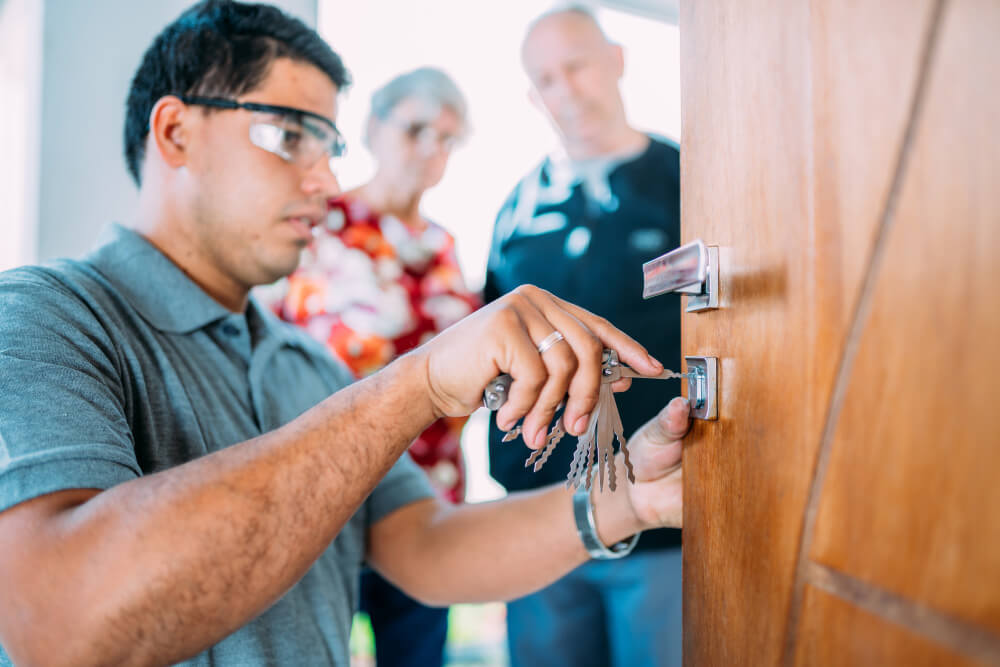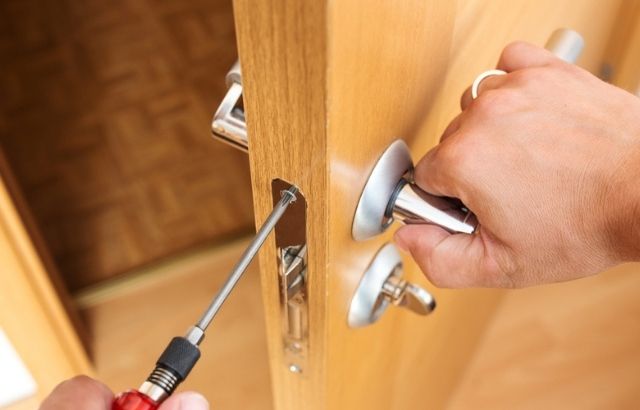When securing our belongings, Master Locks have been a trusted choice for decades. However, what happens when you find yourself in a situation where you’ve forgotten the combination or misplaced the key? Fear not! In this comprehensive guide, I will walk you through the step-by-step process of unlocking a Master Lock without causing damage. So, grab your tools, and let’s get started!
How to Unlock a Master Lock
Tools needed for unlocking a Master Lock

Before we dive into the unlocking process, let’s first gather the essential tools you’ll need to unlock a Master Lock successfully. These tools are easily accessible and can be found at your local hardware store or online. Here’s what you’ll need:
- Lock Pick Set: A lock pick set consists of various tools that help manipulate the lock’s internal components. It typically includes tension wrenches, hooks, diamond, and rake picks.
- Shim: A shim is a thin, flat piece of metal that can bypass the lock’s mechanism. It is especially useful for combination locks.
- Lubricant: A lubricant, such as WD-40 or graphite powder, will help ease the movement of the lock’s internal parts, making the unlocking process smoother.
- Flashlight: A flashlight will be useful when working in low-light conditions, allowing you to see the lock’s mechanism.
Now that we have our tools ready let’s move on to the step-by-step guide on unlocking a Master Lock.
Determine the Lock Type
The first step in unlocking a Master Lock is to identify the type of lock you are dealing with. Master Locks come in various forms, including combination, key, and electronic locks. Each type requires a slightly different approach, so knowing what you’re working with is essential.
Combination Locks
If you’re dealing with a combination lock, proceed as follows:
- Inspect the Lock: Examine the lock’s dial and look for any visible wear patterns or numbers that may indicate the correct combination.
- Apply Tension: Apply slight tension to the shackle while turning the dial clockwise. This will help you feel the resistance points as you rotate the dial.
- Find the Resistance Points: Slowly rotate the dial counterclockwise, feeling for resistance points. These points indicate the correct combination numbers.
- Unlock the Lock: Once you’ve identified the resistance points, rotate the dial clockwise, aligning each resistance point with the reference mark on the lock. With each correct number aligned, the resistance will decrease. Continue this process until all resistance points have been aligned and the lock pops open.
Step 3: Key Locks
If you have a key lock, follow these steps:
- Inspect the Lock: Examine the lock and the key. Look for any signs of damage or wear that may affect the key’s effectiveness.
- Insert the Key: Insert the key into the lock and apply slight pressure upwards or downwards while turning it gently. This technique, known as “jiggling,” can help manipulate the lock’s pins and tumblers.
- Turn the Key: Slowly turn the key in both directions, applying gentle pressure. Listen for any clicking or movement inside the lock. This indicates that the pins and tumblers are aligning correctly.
- Unlock the Lock: Once you feel the pins and tumblers aligning, turn the key until the lock disengages and opens. If you encounter any resistance, release the pressure and try again.
Congratulations! You have successfully unlocked your Master Lock using the appropriate method. However, it would be best if you avoided some common mistakes to ensure a smooth unlocking process.
Common mistakes to avoid when unlocking a Master Lock

While unlocking a Master Lock may seem straightforward, a few common mistakes can hinder your progress. By avoiding these mistakes, you’ll save time and frustration. Here are some pitfalls to watch out for:
Mistake 1: Using Excessive Force
One of the most common mistakes people make when unlocking a Master Lock is applying excessive force. Remember, these locks are designed to be secure but not invincible. Applying too much force can damage the lock’s internal components, making unlocking even more challenging.
Mistake 2: Neglecting Lubrication
Proper lubrication is crucial for the smooth operation of a lock. Neglecting to lubricate the lock’s internal parts can increase friction and resistance, making unlocking more difficult. Remember to apply a small amount of lubricant to the key or lock pick before attempting to unlock the Master Lock.
Mistake 3: Incorrect Technique
Each type of Master Lock requires a specific technique for unlocking. Using or applying the wrong technique can lead to frustration and potential lock damage. Always refer to the manufacturer’s instructions or reliable sources for the correct unlocking technique.
By avoiding these common mistakes, you’ll be well on unlocking any Master Lock. However, if you’re looking for alternative methods to unlock a Master Lock, read on!
Alternative methods for unlocking a Master Lock
While the traditional methods we’ve discussed so far are effective, there are alternative methods you can try if you find yourself without the necessary tools or facing a particularly challenging lock. Here are a few alternative methods for unlocking a Master Lock:
Bypassing the Lock: In some cases, you may Bypass the lock altogether by removing the hinges or breaking the shackle. This should be a last resort and is not recommended unless you have other options.
Contacting a Locksmith: If you cannot unlock the Master Lock using any of the methods mentioned, it’s best to seek professional help. A locksmith has the expertise and specialized tools to safely unlock the lock without causing damage.
Remember, these alternative methods should only be used when necessary. It’s always best to try the traditional unlocking methods first. With practice, you’ll become more proficient at unlocking Master Locks.
My Opinion: Mastering the art of unlocking a Master Lock
In conclusion, unlocking a Master Lock can be straightforward if you have the right tools and follow the correct techniques. By using the step-by-step guide provided in this ultimate guide, you’ll be able to unlock a Master Lock with ease. Remember to gather the necessary tools, avoid common mistakes, and practice the alternative methods responsibly.
So, the next time you find yourself with a locked Master Lock and no key or combination, don’t panic! You now know to unlock it yourself. Happy unlocking!




